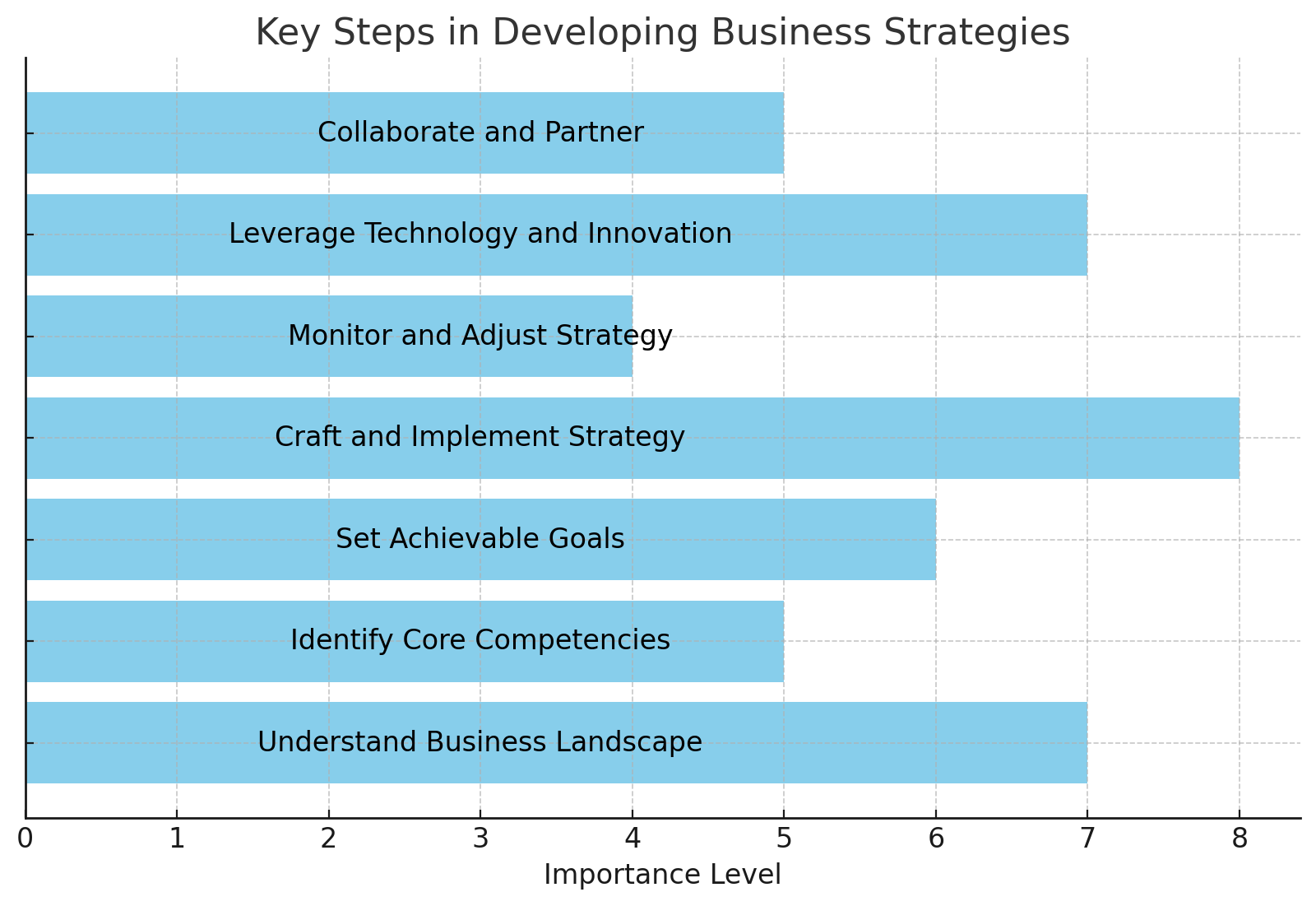In today’s competitive marketplace, businesses must continuously evolve to thrive. As a business consultant, I’ve observed that the most successful companies are those that proactively seek and implement effective business strategies. These strategies not only drive growth but also ensure long-term sustainability. Here, I’ll share key insights into finding and applying robust business strategies that can help organizations navigate the complexities of the modern business landscape.
Understanding the Business Landscape
The first step in developing a successful business strategy is a comprehensive understanding of the current business environment. This involves:
1. Market Analysis: I evaluate market trends, customer needs, and competitor activities to identify opportunities and threats. Tools like SWOT analysis (Strengths, Weaknesses, Opportunities, Threats) are instrumental in this phase.
2. Internal Assessment: Analyzing the company's internal processes, resources, and capabilities helps me identify strengths to leverage and weaknesses to address.
3. Stakeholder Engagement: Engaging with stakeholders, including employees, customers, and partners, provides diverse perspectives on the business’s position and potential.

The above image represents the key steps in developing business strategies, highlighting their importance levels. The steps include understanding the business landscape, identifying core competencies, setting achievable goals, crafting and implementing the strategy, monitoring and adjusting the strategy, leveraging technology and innovation, and collaborating and partnering.
Identifying Core Competencies and Differentiators
A successful strategy often hinges on leveraging a company’s core competencies and unique differentiators. This involves:
1. Value Proposition: I work on clearly defining what makes the company’s products or services unique and valuable to customers. This could be quality, innovation, customer service, or cost-effectiveness.
2. Core Competencies: Identifying the key skills, technologies, or resources that provide a competitive edge is crucial. For instance, a tech company might focus on its innovative R&D capabilities, while a retail company might emphasize its supply chain efficiency.
Setting Clear, Achievable Goals
Strategic planning requires setting specific, measurable, achievable, relevant, and time-bound (SMART) goals. This helps in:
1. Direction and Focus: Providing a clear direction for the company and aligning resources towards achieving these goals.
2. Performance Measurement: Establishing benchmarks and metrics to track progress and make necessary adjustments.
Crafting and Implementing the Strategy
Once the groundwork is laid, the next step is to craft a detailed strategy. This involves:
1. Strategic Initiatives: Developing specific initiatives and projects that align with the strategic goals. Each initiative should have clear objectives, timelines, and resource allocations.
2. Resource Allocation: Ensuring that the necessary financial, human, and technological resources are allocated to support strategic initiatives.
3. Change Management: Preparing the organization for change through effective communication, training, and support. Change management is crucial for overcoming resistance and ensuring smooth implementation.
Monitoring and Adjusting the Strategy
The business environment is dynamic, and strategies must be flexible to adapt to changes. This involves:
1. Continuous Monitoring: Regularly reviewing performance metrics and market conditions to assess the effectiveness of the strategy.
2. Feedback Loops: Establishing mechanisms for feedback from employees, customers, and other stakeholders to inform strategic adjustments.
3. Agility: Being prepared to pivot or make significant changes to the strategy in response to new opportunities or challenges.
Leveraging Technology and Innovation
Incorporating technology and innovation into business strategies is no longer optional; it’s essential. This can involve:
1. Digital Transformation: Implementing digital technologies to improve operational efficiency, customer experience, and decision-making processes.
2. Innovation Culture: Fostering a culture of innovation where employees are encouraged to experiment and develop new ideas.
3. Data Analytics: Utilizing data analytics to gain insights into customer behavior, market trends, and operational performance.
Collaboration and Partnerships
Strategic partnerships and collaborations can significantly enhance a company’s capabilities and market reach. This involves:
1. Strategic Alliances: Forming alliances with other companies to leverage complementary strengths and resources.
2. Joint Ventures: Engaging in joint ventures to enter new markets or develop new products.
3. Networking: Building a robust network of industry contacts to facilitate knowledge exchange and collaboration opportunities.
Conclusion
From my perspective as a business consultant, finding and implementing effective business strategies is an ongoing process that requires a deep understanding of the business environment, a clear vision, and a commitment to continuous improvement. By focusing on core competencies, setting clear goals, leveraging technology, and fostering collaboration, businesses can navigate challenges and capitalize on opportunities, ensuring sustained growth and success.
Remember, the essence of a successful business strategy lies not just in its formulation but in its execution. Regularly revisiting and refining the strategy is key to staying ahead in a constantly evolving marketplace.

